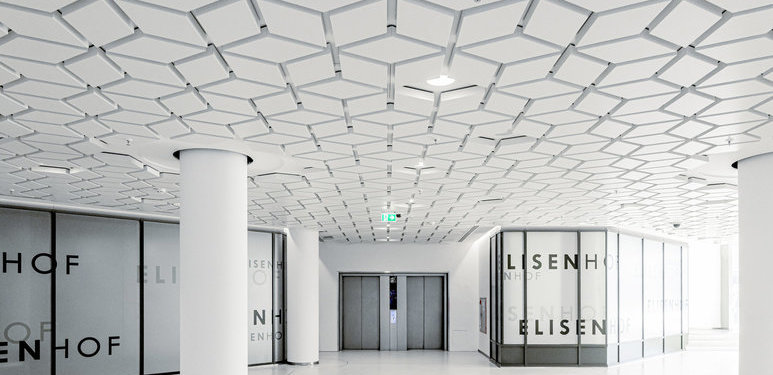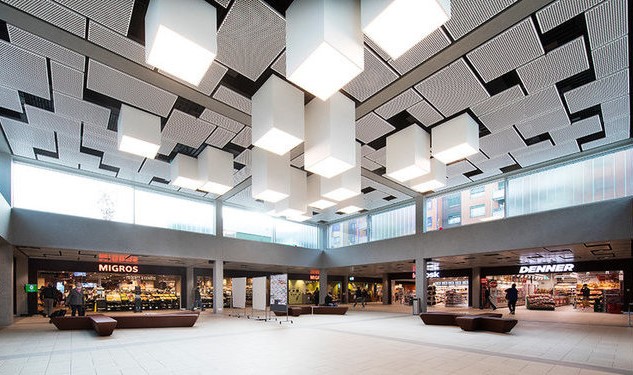
7 tips for metal ceilings that Chat GPT doesn't even know about yet..
There are many types of metal ceilings – dozens, or even hundreds of variations. If you're unsure how to properly utilize them, we bring you several tips that will help you choose the best solution for your project.


Metal ceilings are ideal for public spaces, offices, restaurants, and other places where you will appreciate their easy maintenance, long lifespan, and high fire resistance. The most common types include full-area (solid), slatted, or open varieties, such as expanded metal and suspended islands.
1. Are metal ceilings acoustic?
Standard metal ceilings do not have acoustic properties, but they can be modified to absorb sound. This can be achieved by adding acoustic insulation (e.g., SPP2) or microperforation of the surface. The insulation can be applied directly to the ceiling or to the supporting structure of the ceiling, with optimal effectiveness achieved by using an air gap between the ceiling and the ceiling tiles.2. Expanded metal – trends in metal ceilings
Expanded metal is perfectly suited for open ceiling systems due to its open structure, for example, in offices or corridors. It allows for a visual barrier between technical installations and the workspace without disrupting the open feel of the room. Another advantage is the ability to place lighting above the ceiling without the expanded metal creating any shading.3. Suspended slats – a current trend in projects
Suspended slats are currently very popular. With a surface finish that mimics wood, they can elegantly replace solid wood, especially where it is necessary to meet the fire resistance requirements of class A2. When placed at height, they look almost indistinguishable from natural wood.4. Smaller ceiling scope? Choose system solutions
If you are working on a smaller project, we recommend opting for a system solution. Manufacturing custom dimensions can be costly, and some manufacturers have a minimum order of up to 100 m². Therefore, it is more practical to choose standard products and possibly finish the edges of the ceiling with drywall.5. Heating and cooling
Metal ceilings are an excellent solution for full-area heating and cooling due to their ability to transfer heat and cold with almost no losses. The pipe system is often already prepared during production and is placed behind the visible part of the panels, ensuring optimal performance. However, this system is best planned during the project phase.6. Where are metal ceilings not suitable?
If you want to create a cozy atmosphere, for example in an apartment or family home, metal ceilings are not a suitable choice. They are also not ideal for low spaces, where they will not appear aesthetically pleasing. They shine best in larger heights.7. The cost of metal ceilings
Metal ceilings offer a reasonable price/performance ratio. They are therefore an affordable choice for public projects that require long durability, minimal maintenance, and non-flammable material with an attractive appearance. |
In conclusion
Metal ceilings are excellently suited as suspended ceilings or slats and provide a practical solution for covering technologies and pipes carried under the supporting ceiling. Whether you choose a solid, perforated, or open variety, metal ceilings will give the space a modern and industrial look.If you need advice on a specific solution, do not hesitate to contact us. We are happy to help your project achieve the perfect result.
 |
The English translation is powered by AI tool. Switch to Czech to view the original text source.
0 comments
add comment












